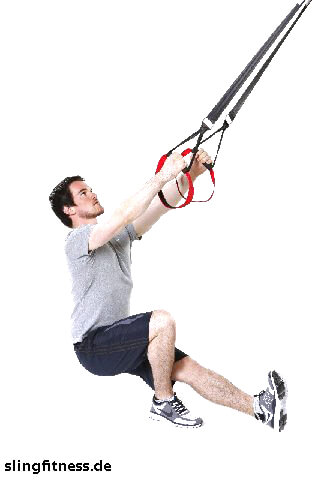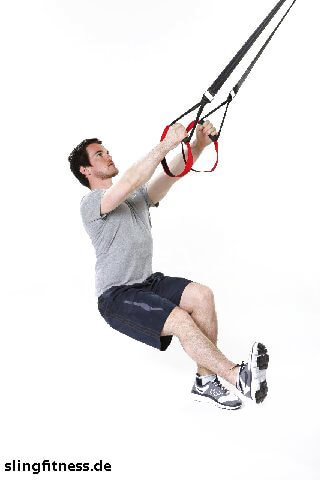Primary: Legs, Arms (quadrizeps, ischiocrurale M., gluteen, bizeps brachii)
Secondary: Back (erector spinae, latissimus, palmarflexoren)
The jump-pistols are very intensive and require a good balance. The jumps stress the supporting leg with more weight than its own body-weight. The healthy knee can be flexed more than 90 degree.
The following figures illustrate the exercise Pistols with Jump and Switch:
 |
 |
| Suspension Training Leg Exercises | |
|
Starting Position The upper body is leaned back. The arms are stretched and the palms point to each other. |
Final Position The new supporting leg is the leg that has been hold up. Depending on the intensity it can be more or less flexed. The upper body is upright and the arms are stretched. |
|
Movement 1 The body is lowered by a flexion in the knee of the supporting leg. The lifted leg has to stay in the air and therefore it is stretched. From this deep position the upper body is explosively pushed upwards by the power of the leg. |
Movement 2 In the flight phase the stretched leg gets bent and the leg that has been flexed gets stretched. After the landing with the bent leg, the balance must be achieved, that the buttocks can be lowered by a flexion of the new supporting leg. Afterwards a further jump is executed with a switch of the supporting leg. |
|
Hint: If knee problems are known, you should not flex the knee joint less than 90 degree. The weight must be shifted on the heel and the knee must not reach over the tiptoe level. Make sure that the hip does not sag during the flexion. The height of the jump and the velocity of the exercise can be changed, depending on the desired intensity. |
|
